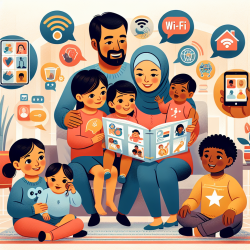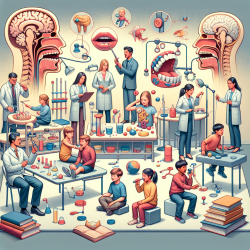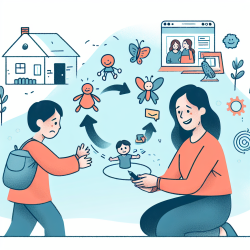As a speech-language pathologist, creating positive outcomes for children with communication needs is our primary goal. The recent study, "Building Family Capacity: Supporting Multiple Family Members to Implement Aided Language Modeling," published in the Journal of Autism and Developmental Disorders, provides compelling evidence for the benefits of family-centered capacity-building practices in aiding children who use augmentative and alternative communication (AAC).
Family-centered capacity-building practices are interventions designed to engage family members in the communication development of children with disabilities. These practices not only empower family members but also create a more supportive and consistent communication environment for the child. This study specifically focused on training family members to use Aided Language Modeling (ALM), an evidence-based AAC strategy, within their natural home routines.
Key Findings
- Increased Fidelity and Rate of ALM: The study found a significant increase in the fidelity and rate of ALM strategy use by family members after the intervention.
- Enhanced Child Communication: There was a modest increase in the proportion of the child's independent communication using the speech-generating device (SGD).
- Positive Social Validity: Family members found the goals, procedures, and outcomes of the intervention to be socially valid and beneficial.
Practical Implementation
For practitioners looking to improve their skills or encourage further research, consider the following steps based on the study's outcomes:
- Engage Multiple Family Members: Involving various family members, including siblings and extended family, can create a more comprehensive support system for the child. This study demonstrated that training different family members to use ALM was effective and well-received.
- Use Telepractice for Training: The study utilized telepractice to train and coach family members. This approach can be particularly useful in reaching families who may have geographical or time constraints.
- Focus on Natural Routines: Embedding ALM strategies within the child’s daily routines and activities can increase opportunities for practice and generalization of communication skills.
- Monitor and Provide Feedback: Continuous monitoring and feedback are crucial for maintaining high fidelity in the use of ALM strategies. The study showed that family members benefitted from regular coaching sessions.
Encouraging Further Research
While the study provides valuable insights, it also highlights areas needing further exploration:
- Long-term Impact: Future research should examine the long-term effects of family-centered capacity-building interventions on child communication outcomes and family dynamics.
- Diverse Family Structures: Additional studies are needed to understand how these interventions work across different cultural, linguistic, and socio-economic backgrounds.
- Generalization Across Activities: Investigating how family members can generalize ALM strategies across various activities and routines would be beneficial.
Implementing these practices and encouraging further research can significantly enhance the communication skills of children using AAC, leading to better overall outcomes for both the children and their families.
To read the original research paper, please follow this link: Building Family Capacity: Supporting Multiple Family Members to Implement Aided Language Modeling.










